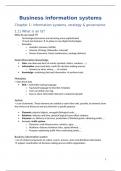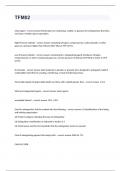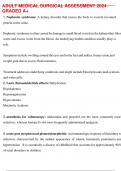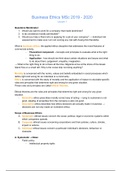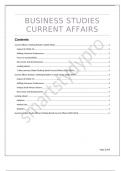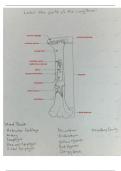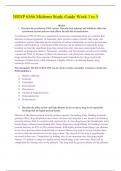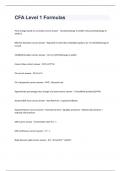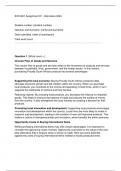Zusammenfassung
Samenvatting Business Information systems
- Kurs
- Hochschule
Volledige samenvatting van Business Information Systems, exclusief hoofdstuk 4, aangezien dit bijna allemaal praktische toepassingen zijn (UML, SQL, Excel). Complete summary of Business Information Systems, excluding chapter 4, as these are almost only practical applications (UML, SQL, Excel).
[ Mehr anzeigen ]
